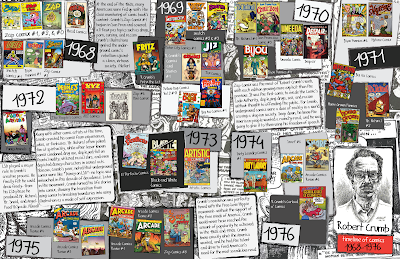Musica Viva Radial, Josef Muller-Brockmann, 1970
Color Sticks, Josef Muller-Brockmann, 1960
Grammo-grafik, Josef Muller-Brockmann, 1957
Muller-Brockmann’s colorfully minimalist style typically involves multiple colors and simple shapes for the musical community. Between Musica Viva Radial and Color Sticks, the entire rainbow spectrum was represented in seemingly the same color palette. Soft yet spritely colors bring a vibrance to an apparently bland musical community. Grammo-graifx is a more melodramatic poster considering the two previously discussed, however it should be noted that the poster donning the record front and center was one of Muller- Brockmann’s first posters made before his experimentation with wild hues. The Bauhaus school influenced the shift from plain to snappy. The addition of color to his posters added a rhythm to his design style that reflects the rhythm of the music. Since he was multilingual, he was able to design posters for at least four different cultures. Using mathematical approaches to achieve symmetry and correct forms.
Alvin Lustig
Fortune, September, 1952, Alvin Lustig, 1952
New Classics Announcement, Alvin Lustig, 1943-45
Alvin Lustig christmas card, Alvin Lustig, 1938-42
After a career in book cover illustration, Fortune magazine snapped up Alvin Lustig’s talents in cover designs. Vivid color palettes and wild, angular shapes created a fanciful landscape of pictures different than any other designer of the time.The September 1952 has a collage feel with the mixed-matched text and the painterly quality of the pink and orange background. Placing the titles of the articles in the black and white building shapes was an original way to display the Fortune’s content. Gathering his diverse style from Dadaism and Art Deco, Lustig creates a mix of simple and whimsical images in his designs. Lustig takes complex shapes to a peak with his Christmas Card. Blue and red squiggles, stripes, stars, and dots dance in a snowy, framed setting. The perfect match of opposites creates a colorful visual harmony that becomes important when marketing a magazine. Lustig is in tune with the balances between sharp and soft objects in order to create a certain harmony.
Saul Bass
One, Two, Three, Saul Bass, 1961
Anatomy of a Murder, Saul Bass, 1959
Bonjour Tristesse, Saul Bass, 1957
Focusing on communicating through abstract geometric figures, Saul Bass creates slightly uneasy yet identifiable concepts in his movie poster designs. Though at first glance the subject may seem cryptic, after watching the movie the shapes reveal the meaning behind the oddly placed squares and dislocated body parts. In Bass’ Anatomy of a Murder, Bass plays up the idea of dissection and chalk outlines with a delineated figure playfully laying on the floor, doll-like. The affect of demarcating is further realized in the text, which is also outlined to create a form instead of just words. One, Two, Three is pictorially drawn counting the number of balloon cutouts the female figure holds. In each of his posters, his use of black emphasizes the most important aspects of the movie. The woman’s glove, the outline of the body, and the face’s tear are all black to signify importance. Saul Bass’ style is inspirational for the modern designer, as it’s shape and form create enigmatic movie posters representational of a generation craving mystery.






















































